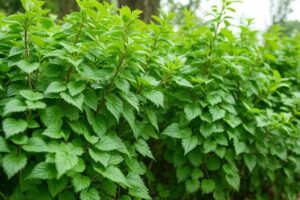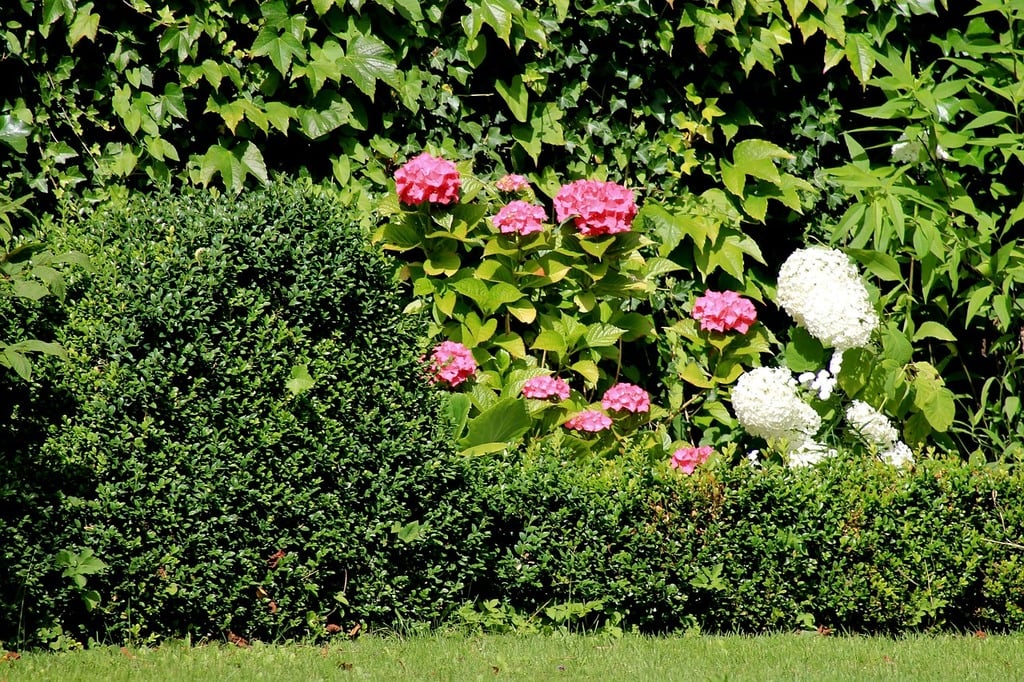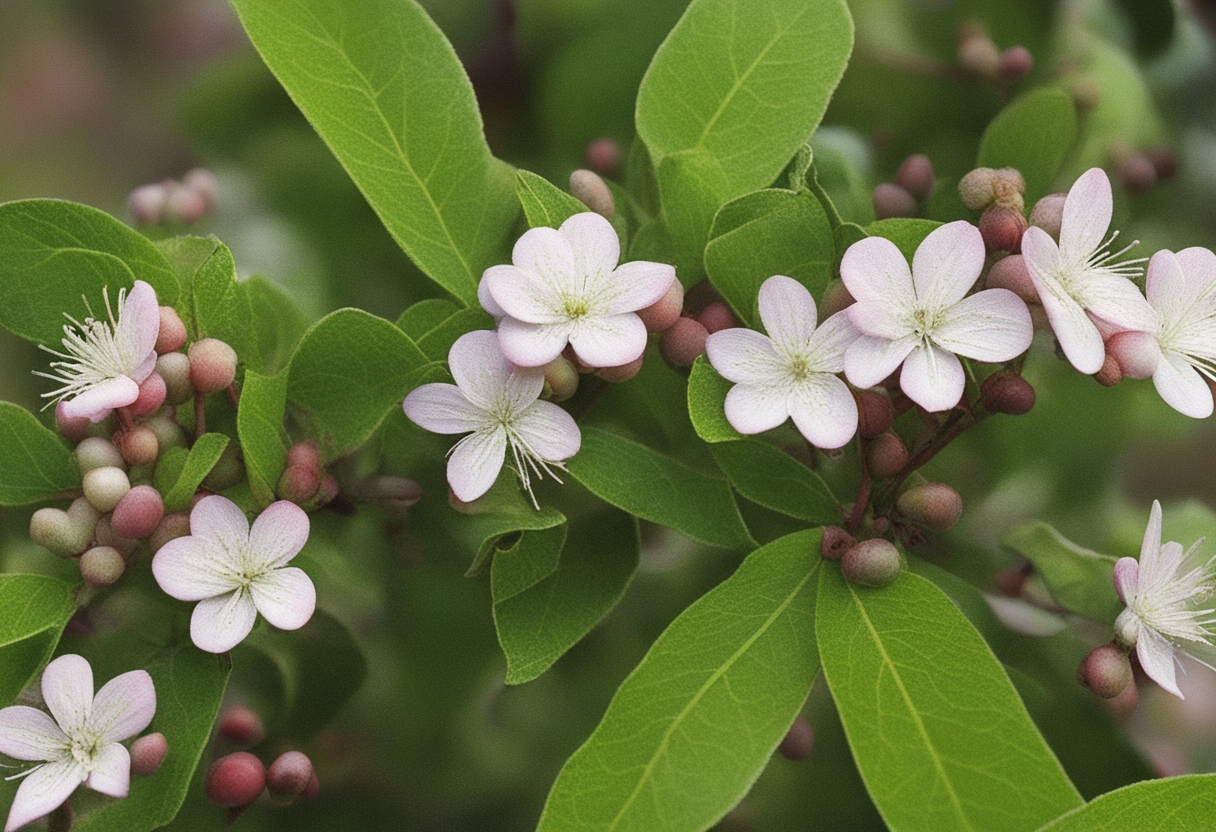Appropriate Watering Practices

Watering your shrubs correctly is essential for their overall health and blooming potential. One key aspect is to avoid overwatering, as this can lead to root rot and other issues. It is better to provide deep, infrequent watering rather than frequent shallow watering. This encourages the roots to grow deeper into the soil, creating a stronger and more resilient shrub.
In addition, it’s important to water the shrubs at the base rather than overhead. This helps to prevent the leaves from getting wet, reducing the risk of fungal diseases. Use a soaker hose or drip irrigation system to deliver water directly to the roots. Make sure to water in the morning or evening when the temperatures are cooler, as this allows the water to soak into the soil before it evaporates. By following these appropriate watering practices, you can ensure that your shrubs stay healthy and vibrant throughout the blooming season.
• Avoid overwatering to prevent root rot and other issues
• Provide deep, infrequent watering rather than frequent shallow watering
• Encourage deeper root growth for stronger and more resilient shrubs
• Water at the base of the shrubs to prevent leaves from getting wet
• Use a soaker hose or drip irrigation system to deliver water directly to roots
• Water in the morning or evening when temperatures are cooler
• Allows water to soak into soil before evaporating
• Reduces risk of fungal diseases
By following these appropriate watering practices, you can ensure that your shrubs stay healthy and vibrant throughout the blooming season.
Understanding the right watering techniques to encourage blooming
Watering plays a crucial role in encouraging blooming in shrubs. One of the key aspects to consider is the frequency of watering. It’s important to water the shrubs deeply and infrequently rather than providing frequent shallow watering. Deep watering allows the roots to grow deep into the soil, aiding in the overall health and blooming capacity of the shrub. However, it’s essential to ensure that the soil is well-drained to avoid waterlogging, which can lead to root rot and other issues. Additionally, watering in the early morning or late evening is recommended, as it reduces moisture loss due to evaporation during the hotter parts of the day.
Another important factor to consider is the amount of water to be applied. The amount will vary depending on the specific shrub species, soil type, and climate conditions. It’s generally recommended to provide enough water to moisten the top 6-8 inches of the soil. However, it’s crucial to avoid overwatering, as excessive moisture can lead to root suffocation and hinder blooming. Regularly monitoring the moisture levels in the soil and adjusting watering practices accordingly is key to promoting healthy blooming in shrubs.
• Water the shrubs deeply and infrequently to encourage deep root growth
• Ensure that the soil is well-drained to prevent waterlogging and root rot
• Water in the early morning or late evening to reduce moisture loss from evaporation
• The amount of water needed will vary depending on the shrub species, soil type, and climate conditions
• Generally, moisten the top 6-8 inches of soil without overwatering
• Regularly monitor soil moisture levels and adjust watering practices accordingly
Fertilizing for Blooming

To promote the production of vibrant and abundant blooms in your shrubs, it is important to employ suitable fertilizing techniques. Fertilizers play a crucial role in providing the necessary nutrients for healthy growth and flowering. The primary nutrients needed for blooming shrubs are nitrogen (N), phosphorus (P), and potassium (K).
When selecting a fertilizer, look for one specifically designed for blooming shrubs, often labeled with a higher middle number (P) on the packaging. This indicates a higher concentration of phosphorus, which is essential for promoting flower production. Before applying the fertilizer, carefully read and follow the manufacturer’s instructions for the appropriate quantity. It is important to note that over-fertilizing can lead to excessive foliage growth at the expense of blossoms, resulting in a less impressive display of flowers. Therefore, it is recommended to fertilize blooming shrubs according to the specific needs of the particular species, following a well-planned schedule to avoid over-application and maximize floral potential.
• Select a fertilizer specifically designed for blooming shrubs with a higher middle number (P) on the packaging
• Read and follow the manufacturer’s instructions for the appropriate quantity before applying
• Over-fertilizing can lead to excessive foliage growth at the expense of blossoms
• Fertilize blooming shrubs according to the specific needs of the particular species
• Follow a well-planned schedule to avoid over-application and maximize floral potential
Using suitable fertilizers to promote flower production in shrubs
Fertilizing plays a vital role in promoting abundant flower production in shrubs. Selecting the appropriate fertilizers and understanding their application methods is essential for maximizing blooming potential. When choosing fertilizers, it is important to consider the specific nutritional needs of the shrubs, as not all fertilizers are created equal.
One key factor to consider when fertilizing shrubs is the ratio of nitrogen (N), phosphorus (P), and potassium (K) in the fertilizer. A balanced fertilizer with equal amounts of N, P, and K, such as a 10-10-10 or 20-20-20, can provide the necessary nutrients to support healthy growth and flowering. Additionally, slow-release fertilizers are beneficial as they release nutrients gradually over time, ensuring a steady supply of nutrients for the shrubs.
Proper application of fertilizers is equally important. It is advisable to follow the instructions provided by the manufacturer to determine the appropriate amount and frequency of application for each specific shrub species. Over-fertilization can lead to excessive foliage growth at the expense of flower production, while under-fertilization can result in stunted growth and lack of blooms. By using suitable fertilizers and adhering to the proper application techniques, shrub enthusiasts can greatly enhance flower production and enjoy a more vibrant and thriving garden.
• Selecting the appropriate fertilizers and understanding their application methods is essential for maximizing blooming potential in shrubs.
• Not all fertilizers are created equal, so it’s important to consider the specific nutritional needs of the shrubs when choosing fertilizers.
• A balanced fertilizer with equal amounts of nitrogen (N), phosphorus (P), and potassium (K) can provide necessary nutrients for healthy growth and flowering.
• Slow-release fertilizers are beneficial as they release nutrients gradually over time, ensuring a steady supply for the shrubs.
• Proper application of fertilizers is important. Follow manufacturer instructions for the appropriate amount and frequency of application for each specific shrub species.
• Over-fertilization can lead to excessive foliage growth at the expense of flower production, while under-fertilization can result in stunted growth and lack of blooms.
• Using suitable fertilizers and adhering to proper application techniques can greatly enhance flower production in shrubs.
Dealing with Pests and Diseases

One of the challenges that gardeners face when it comes to cultivating blooming shrubs is dealing with pests and diseases. These unwanted visitors can harm the plants, weaken their growth, and prevent them from producing beautiful flowers. Therefore, it is important to take proactive measures to prevent and address these issues.
Prevention is key when it comes to pests and diseases. Regularly inspecting your shrubs for any signs of infestation or disease is crucial. If you notice any pests or symptoms, such as discolored leaves or abnormal growth, take immediate action. This may involve using organic or chemical treatments to eradicate pests or applying fungicides to prevent the spread of diseases. Maintaining good hygiene in your garden, such as removing fallen leaves or debris, can also help reduce the likelihood of pests and diseases. By being vigilant and proactive, you can ensure that your blooming shrubs stay healthy and vibrant throughout the year.
• Regularly inspect your shrubs for signs of pests or diseases
• Take immediate action if you notice any pests or symptoms
• Use organic or chemical treatments to eradicate pests
• Apply fungicides to prevent the spread of diseases
• Maintain good hygiene in your garden by removing fallen leaves and debris
Preventing and addressing common issues that can hinder blooming
To ensure optimal blooming in shrubs, it is essential to be aware of and address any common issues that could hinder their growth. One such issue is improper pruning. Pruning at the wrong time or in the wrong manner can interfere with the shrub’s ability to produce flowers. It is important to research and understand the specific pruning requirements of each shrub species to avoid disrupting their blooming potential.
Another common issue that can hinder blooming is inadequate sunlight. Shrubs generally require a certain amount of sunlight each day to thrive and produce flowers. If a shrub is placed in a location with insufficient sunlight or is overshadowed by nearby trees or structures, it may not receive the necessary light for blooming. In such cases, it is crucial to consider relocating the shrub to a sunnier spot or removing any obstacles that obstruct sunlight. Additionally, regularly monitoring and adjusting the amount of water, fertilizer, and other care routines are necessary to ensure that the shrubs are not over- or under-watered or fertilized excessively, as these imbalances can also hinder blooming. By addressing these common issues and providing the appropriate care, shrubs can flourish and showcase their beautiful blooms.
• Improper pruning can hinder blooming in shrubs
• Research and understand the specific pruning requirements of each shrub species
• Prune at the right time and in the right manner to avoid disrupting blooming potential
• Inadequate sunlight can hinder blooming in shrubs
• Ensure that shrubs receive a sufficient amount of sunlight each day
• Consider relocating shrubs to a sunnier spot if necessary
• Remove any obstacles that obstruct sunlight for the shrubs
• Regularly monitor and adjust water, fertilizer, and other care routines for optimal blooming
conditions
• Avoid over-watering or under-watering shrubs
• Avoid excessive fertilization as it can also hinder blooming
By addressing these common issues and providing appropriate care, you can ensure that your shrubs flourish and showcase their beautiful blooms.
Mulching for Blooming

Mulching plays a crucial role in promoting blooming in shrubs. By utilizing organic materials such as compost, wood chips, or straw, mulch helps retain soil moisture, which is essential for the health and development of flowering plants. Additionally, mulch acts as a protective barrier, shielding the roots of shrubs from extreme temperatures and fluctuations in weather conditions.
When applying mulch to your garden bed, remember to spread it evenly around the base of each shrub, creating a layer that is approximately two to three inches thick. Be cautious not to pile it up against the stems or trunks of the plants, as this can cause rot and promote pest infestation. As the mulch decomposes over time, it enriches the soil, providing a steady supply of nutrients that support the blooming process.
Remember to replenish the mulch annually, especially during the spring or autumn months when the weather is transitioning. This ensures the effectiveness of the mulch in retaining soil moisture and protecting shrub roots from environmental stressors. By incorporating mulching into your gardening routine, you are taking a proactive step towards ensuring the healthy growth and abundant blooming of your shrubs throughout the year.
• Mulching helps retain soil moisture, which is crucial for the health and development of flowering plants.
• Organic materials such as compost, wood chips, or straw can be used as mulch.
• Mulch acts as a protective barrier, shielding shrub roots from extreme temperatures and weather fluctuations.
• When applying mulch, spread it evenly around the base of each shrub in a layer that is approximately two to three inches thick.
• Avoid piling mulch up against the stems or trunks of plants to prevent rot and pest infestation.
• As the mulch decomposes over time, it enriches the soil with nutrients that support blooming.
• Replenish mulch annually during spring or autumn months to maintain its effectiveness in retaining moisture and protecting roots.
Utilizing mulch to enhance soil moisture and protect shrub roots
Mulching is a simple yet effective technique that can greatly benefit the blooming potential of shrubs. By applying a layer of organic material, such as wood chips or bark, around the base of the shrub, moisture in the soil can be retained for longer periods of time. This not only helps to prevent the roots from drying out, but also ensures that the shrub has a steady supply of water, which is crucial for blooming.
In addition to enhancing soil moisture, mulching also serves as a protective barrier for the shrub roots. It helps to regulate soil temperature, shielding the delicate roots from extreme heat in the summer and insulating them from freezing temperatures in the winter. Furthermore, the layer of mulch acts as a natural weed suppressor, preventing unwanted plants from competing with the shrub for nutrients and water. Overall, mulching is an easy and cost-effective way to promote blooming in shrubs while providing them with the necessary protection to thrive.
• Mulching helps to retain moisture in the soil for longer periods of time, preventing shrub roots from drying out.
• The layer of mulch acts as a protective barrier, regulating soil temperature and shielding roots from extreme heat and freezing temperatures.
• Mulching suppresses weed growth, reducing competition for nutrients and water.
• Utilizing mulch is an easy and cost-effective method to promote blooming potential in shrubs while providing necessary protection.
Seasonal Care for Blooming Shrubs

During the spring season, it is crucial to provide adequate moisture to blooming shrubs. This is the time when most plants are actively growing and flowering, so they require regular watering to thrive. It is best to water deeply and infrequently, allowing the soil to dry out slightly between waterings. This helps to encourage the development of deep, strong root systems and prevents waterlogged conditions that can lead to root rot.
In the hot summer months, it is important to monitor the water needs of blooming shrubs closely. The high temperatures and intense sunlight can quickly dry out the soil, putting stress on the plants. Watering should be done early in the morning or late in the evening when evaporation rates are lower. Adding a layer of mulch around the base of the shrubs can also help to retain soil moisture and regulate temperature. However, it is crucial to avoid overwatering during this period, as it can lead to fungal diseases and other issues.
• Water deeply and infrequently during the spring season
• Allow soil to dry out slightly between waterings
• Encourage development of deep, strong root systems
• Prevent waterlogged conditions and root rot
• Monitor water needs closely in hot summer months
• Water early in the morning or late in the evening
• Add a layer of mulch around shrubs to retain moisture
and regulate temperature
• Avoid overwatering to prevent fungal diseases and other issues
Providing the necessary care throughout the year to maintain blooming potential
To maintain the blooming potential of your shrubs throughout the year, it is essential to understand and practice appropriate watering techniques. Watering is crucial for the overall health and vitality of the plants, and it directly affects their ability to produce flowers. However, it is important to strike a balance when it comes to watering. While under-watering can lead to dry soil and wilted plants, over-watering can create conditions that promote fungal diseases and root rot. Therefore, it is recommended to water deeply and less frequently to encourage the shrub’s roots to grow deeper into the soil, resulting in a more robust plant that is better equipped to absorb moisture.
In addition to proper watering, fertilizing plays a significant role in promoting blooming in shrubs. Using suitable fertilizers that are specifically designed for flowering plants can provide the necessary nutrients to support healthy growth and abundant flower production. It is recommended to fertilize shrubs during the active growing season, typically in early spring and again in mid-summer. However, be cautious not to over-fertilize as it can result in excessive foliage growth at the expense of flowers. A balanced fertilizer with a ratio of nitrogen (N), phosphorus (P), and potassium (K) such as 10-10-10 is generally ideal for most flowering shrubs.
• Water deeply and less frequently to encourage deep root growth
• Avoid over-watering to prevent fungal diseases and root rot
• Strike a balance between watering to maintain plant health and blooming potential
• Use suitable fertilizers designed for flowering plants
• Fertilize during the active growing season, in early spring and mid-summer
• Be cautious not to over-fertilize, as it can lead to excessive foliage growth at the expense of flowers
Overall, providing the necessary care throughout the year is crucial for maintaining the blooming potential of shrubs. By understanding proper watering techniques and using appropriate fertilizers, you can ensure that your shrubs remain healthy and produce abundant flowers. Remember to water deeply but less frequently, striking a balance between hydration and avoiding over-watering. Additionally, choose a balanced fertilizer with a ratio of nitrogen (N), phosphorus (P), and potassium (K) such as 10-10-10 for optimal results. With these practices in place, you can enjoy beautiful blooms from your shrubs all year round.












